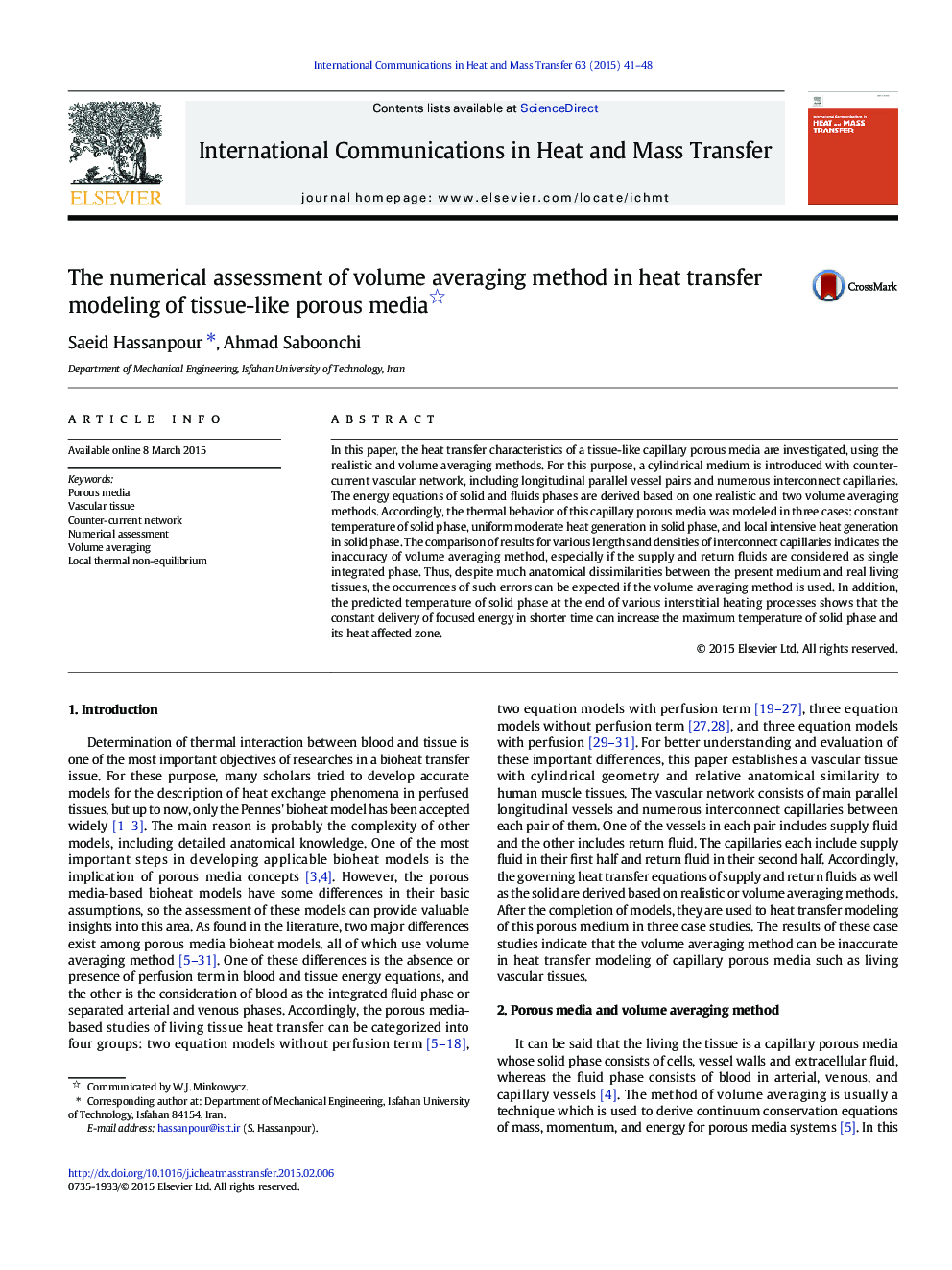| Article ID | Journal | Published Year | Pages | File Type |
|---|---|---|---|---|
| 653057 | International Communications in Heat and Mass Transfer | 2015 | 8 Pages |
Abstract
In this paper, the heat transfer characteristics of a tissue-like capillary porous media are investigated, using the realistic and volume averaging methods. For this purpose, a cylindrical medium is introduced with counter-current vascular network, including longitudinal parallel vessel pairs and numerous interconnect capillaries. The energy equations of solid and fluids phases are derived based on one realistic and two volume averaging methods. Accordingly, the thermal behavior of this capillary porous media was modeled in three cases: constant temperature of solid phase, uniform moderate heat generation in solid phase, and local intensive heat generation in solid phase. The comparison of results for various lengths and densities of interconnect capillaries indicates the inaccuracy of volume averaging method, especially if the supply and return fluids are considered as single integrated phase. Thus, despite much anatomical dissimilarities between the present medium and real living tissues, the occurrences of such errors can be expected if the volume averaging method is used. In addition, the predicted temperature of solid phase at the end of various interstitial heating processes shows that the constant delivery of focused energy in shorter time can increase the maximum temperature of solid phase and its heat affected zone.
Keywords
Related Topics
Physical Sciences and Engineering
Chemical Engineering
Fluid Flow and Transfer Processes
Authors
Saeid Hassanpour, Ahmad Saboonchi,
